Mexico, with its rich cultural and biological heritage, varied climate, and diverse geography, has established itself as a major tourist destination. It is among the most-visited country in the world. This popularity is driven by Mexico’s stunning landscapes, from dazzling beaches to rainforests, deserts, and ancient ruins, offering a wide range of activities for every type of traveler.
Mexico’s tourist attractions are incredibly diverse. The island of Cozumel offers superlative diving experiences around its coral reefs, attracting both casual snorkelers and serious divers. Guanajuato, a city known for its art, hosts the International Cervantino Festival and has unique attractions like the Mummies of Guanajuato exhibit.
Other notable destinations include the Catedral Metropolitana in Mexico City, the largest cathedral in Latin America, and El Arco in Cabo San Lucas, a unique rock formation marking the intersection of the Pacific Ocean and the Gulf of California.
Mexico’s appeal is not limited to natural and historical sites; it also offers a vibrant cultural experience. The country celebrates its indigenous and Spanish colonial heritage through numerous UNESCO World Heritage Sites, festivals like the Day of the Dead, and its globally recognized cuisine.
Best Cities in Mexico
Mexico City
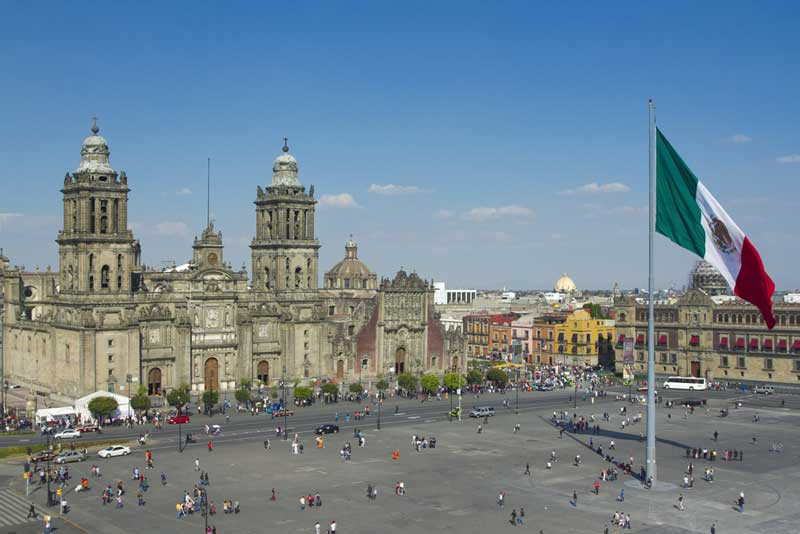
Mexico City
Mexico City, a bustling metropolis, is a treasure trove of art, history, and gastronomy. It’s a city where ancient ruins like the Templo Mayor lie alongside modern skyscrapers.
The heart of the city is the Zócalo, one of the largest city squares in the world, surrounded by landmarks such as the National Palace and the Metropolitan Cathedral, a masterpiece of colonial architecture.
Art enthusiasts can explore the rich collections at the Palacio de Bellas Artes and the Frida Kahlo Museum in Coyoacán. For nature lovers, the expansive Chapultepec Park, one of the largest city parks in the Western Hemisphere, offers a respite from the urban sprawl.
The park houses the National Museum of Anthropology, showcasing Mexico’s indigenous heritage. Foodies can indulge in Mexico City’s diverse culinary scene, from street food vendors to high-end restaurants like Pujol, offering a modern twist on traditional Mexican cuisine.
San Miguel de Allende
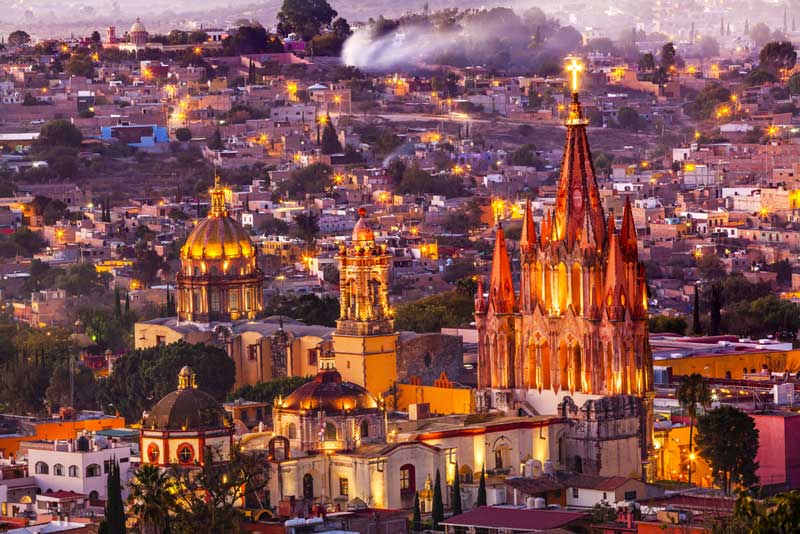
San Miguel de Allende
San Miguel de Allende, nestled in the highlands of central Mexico, is renowned for its well-preserved Spanish colonial architecture and vibrant arts scene. The city’s streets, filled with historic buildings, provide a beautiful backdrop for its numerous art galleries, craft shops, and cultural festivals.
The Gothic-style Parroquia de San Miguel Arcángel dominates the city’s skyline and is a must-visit landmark. San Miguel de Allende has a thriving culinary scene, with a variety of restaurants offering both local and international cuisine.
The city is also known for its lively atmosphere, with frequent cultural events and a strong sense of community. For art lovers, the Fabrica La Aurora, a former textile factory now converted into an art and design center, is a key attraction.
San Miguel de Allende’s mix of historic charm, artistic flair, and cosmopolitan vibe makes it a unique and captivating destination.
Mérida
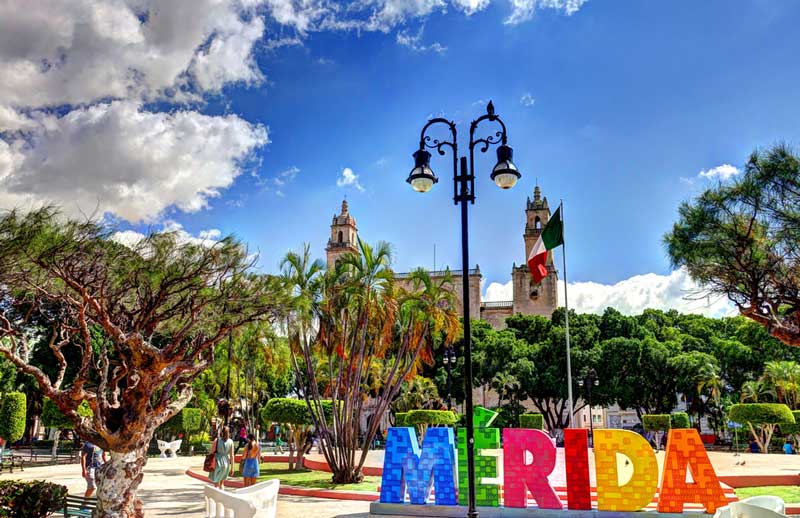
Mérida
Mérida, the cultural capital of the Yucatán Peninsula, seamlessly blends colonial history with a cosmopolitan vibe. This city is renowned for its beautiful Spanish colonial architecture, as seen in the historic Paseo de Montejo, reminiscent of a mini Champs-Elysées.
The Mayapán Archaeological Zone and the Ruta Puuc offer glimpses into the region’s rich Mayan heritage. Mérida’s vibrant heart is Plaza Grande, surrounded by significant buildings including the striking Cathedral de Mérida and the Palacio de Gobierno, known for its murals depicting the region’s history.
The Gran Museo del Mundo Maya is a must-visit for its extensive collection of Mayan artifacts, providing insights into the ancient civilization. Mérida also boasts a thriving culinary scene, with traditional Yucatecan dishes served in restaurants like Manjar Blanco.
For a unique experience, visitors can explore the bustling Lucas de Galvez Market or enjoy dinner and dancing in Santa Lucia Park at night
Guadalajara
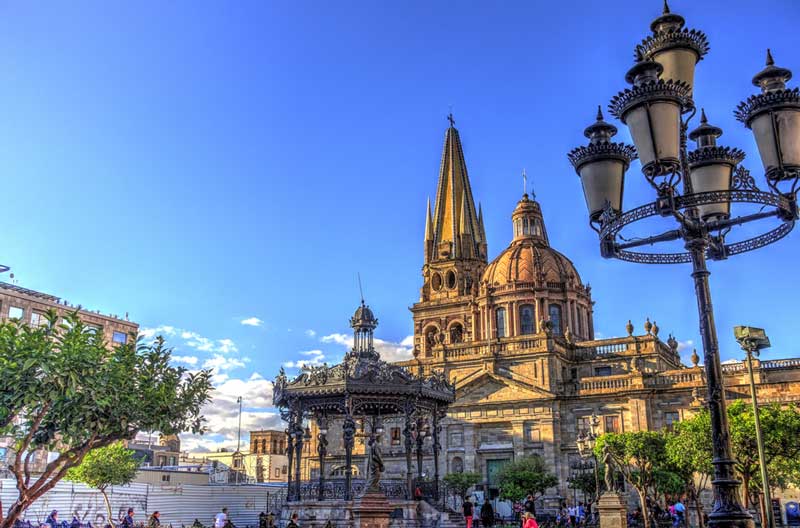
Guadalajara
Guadalajara, Mexico’s second-largest city, is known for its rich cultural heritage, historic architecture, and vibrant arts scene. It serves as the birthplace of iconic Mexican traditions like mariachi music and tequila.
The city’s historical center is a fusion of colonial architecture and modern-day urban life, with impressive landmarks such as the Guadalajara Cathedral and the Hospicio Cabañas, a UNESCO World Heritage site adorned with famous murals by José Clemente Orozco.
Guadalajara’s charm extends to the Tlaquepaque and Zapopan districts, known for their artisanal crafts and bustling markets.
The city is also a gateway to the tequila-producing region of Jalisco, offering visitors an authentic experience of Mexico’s most famous spirit. With its blend of tradition and modernity, Guadalajara stands out as a dynamic and culturally rich destination in Mexico.
Oaxaca
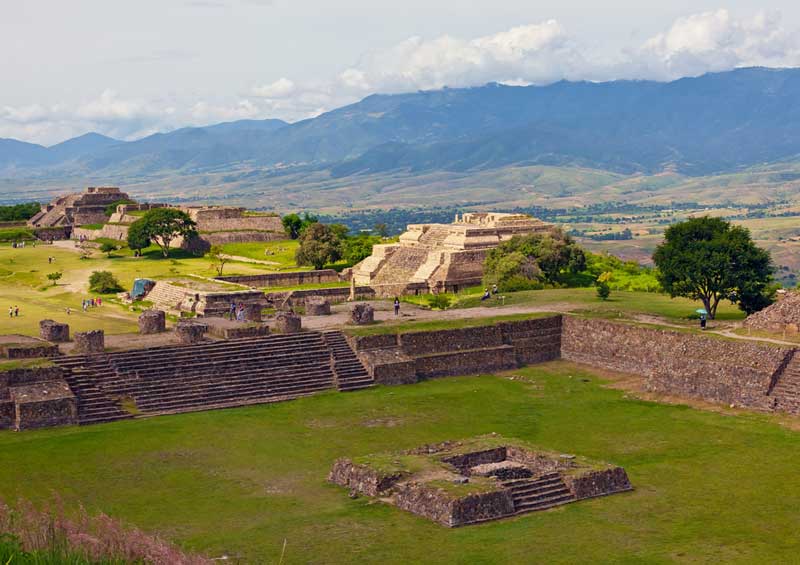
Oaxaca
Oaxaca is a cultural beacon, known for its well-preserved colonial architecture, vibrant indigenous cultures, and culinary delights. The city’s historic center, a UNESCO World Heritage site, is a picturesque ensemble of colonial buildings, cobbled streets, and bustling markets.
Key attractions include the Santo Domingo Temple and the Oaxaca Ethnobotanical Garden, showcasing the region’s rich plant life. The city is also a gateway to significant archaeological sites like Monte Albán and Mitla, reflecting the region’s Zapotec and Mixtec heritage.
Oaxaca’s cuisine, renowned for its complexity and variety, is a highlight, with local specialties like mole and mezcal. The city is also famous for its artisanal crafts, including textiles and pottery. Visitors can explore the colorful markets, like the Mercado Benito Juárez, for a taste of local life and culture.
Final Thoughts
Mexico’s cities are a tapestry of history, culture, and vibrant urban life. Each city is a unique jewel, offering a blend of colonial heritage, rich traditions, and contemporary dynamism.
From architectural marvels and historical sites that echo the past to the bustling markets and lively streets reflecting the present, these cities are a testament to Mexico’s diverse and rich cultural landscape.
They invite visitors to immerse themselves in experiences that range from exploring ancient ruins to savoring exquisite local cuisine.
